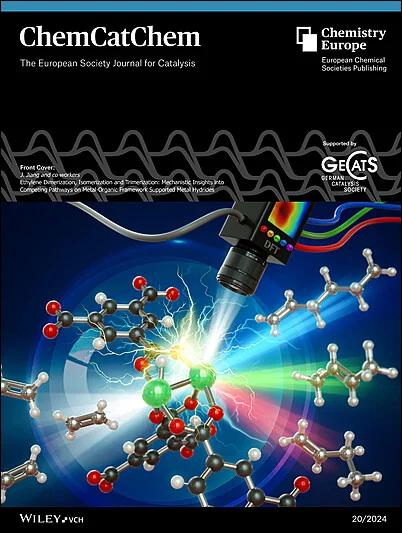Expedient, Directed Ir-Catalyzed Diborylation of (Hetero)Biaryls via a Tridentate Ligand
IF 3.9
3区 化学
Q2 CHEMISTRY, PHYSICAL
引用次数: 0
Abstract
The expedient iridium-catalyzed diborylation of 2-aryl pyridines and isoquinolines with bis(pinacolato)diboron (B2pin2) is reported. Utilizing [Ir(OMe)(COD)]2 and a terpyridine derivate as tridentate ligand, which are rarely used for directed C─H borylation, the heterobiaryls were selectively diborylated in the 2,6-position of the carbocycle. The developed method shows exceptional high activity as well as regioselectivity with low catalyst loading.



利用三齿配体催化的(杂)双芳基二硼化反应
报道了铱催化2-芳基吡啶和异喹啉与双(pinacolato)二硼(B2pin2)的适宜二硼化反应。利用[Ir(OMe)(COD)]2和三吡啶衍生物作为很少用于直接C─H硼化的三齿配体,在碳环的2,6位选择性地进行了二硼化。该方法在低催化剂负载下具有很高的活性和区域选择性。
本文章由计算机程序翻译,如有差异,请以英文原文为准。
求助全文
约1分钟内获得全文
求助全文
来源期刊

ChemCatChem
化学-物理化学
CiteScore
8.10
自引率
4.40%
发文量
511
审稿时长
1.3 months
期刊介绍:
With an impact factor of 4.495 (2018), ChemCatChem is one of the premier journals in the field of catalysis. The journal provides primary research papers and critical secondary information on heterogeneous, homogeneous and bio- and nanocatalysis. The journal is well placed to strengthen cross-communication within between these communities. Its authors and readers come from academia, the chemical industry, and government laboratories across the world. It is published on behalf of Chemistry Europe, an association of 16 European chemical societies, and is supported by the German Catalysis Society.
 求助内容:
求助内容: 应助结果提醒方式:
应助结果提醒方式:


